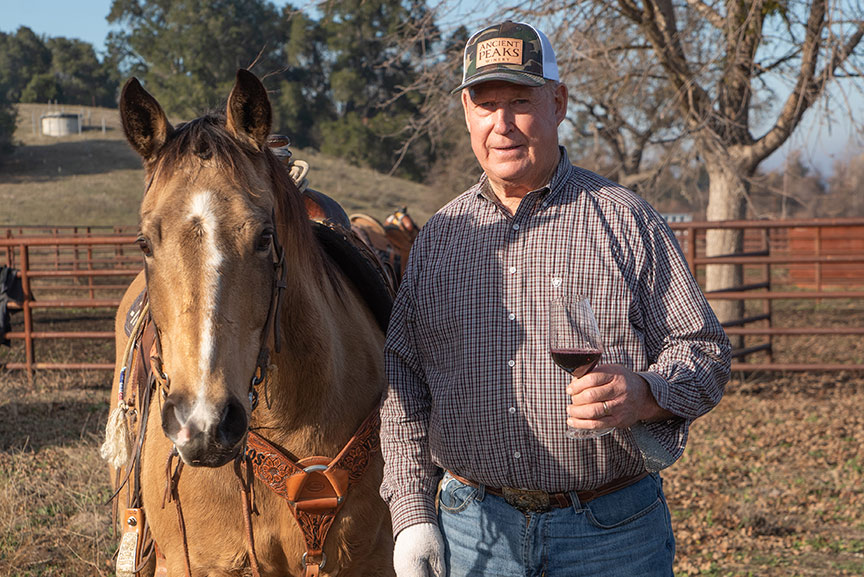Nobody knows the rich history of Santa Margarita Ranch like Ancient Peaks co-owner Karl Wittstrom, our self-appointed ranch historian. We caught up with Karl to learn about his favorite facts and aspects of this storied California rancho:
Native American History & Heritage
As Karl notes, research confirms that Native Americans lived on this part of the Central Coast for more than 14,000 years before the arrival of the Europeans. “The Europeans looked at them as heathens, and their cultures, knowledge and beliefs were nearly lost along the way,” Karl says, noting that many Native American artifacts have been found on the ranch, originating from the local Chumash and Salinan tribes. “It was a shame, because the Native Americans had a vast and advanced knowledge of astronomy, plants and animals. I’m grateful to be able to study that heritage, learn from the ancient Native American cultures and champion their contributions to our knowledge of the world.”
Geological Wonders
One distinct attribute of our estate Margarita Vineyard is its rare diversity of soils, whose origins date back millions of years. The predominant soil types on the ranch are ancient sea bed, Monterey shale, rocky alluvium, granitic and volcanic. “We recently uncovered what was once a reef, with sand dollars tightly packed to a depth of up to three feet,” Karl says. “Our soils differ so dramatically, sometimes meter by meter. It is aweing to contemplate the geological forces that created this place.” Ancient Peaks wines are the beneficiaries of these unique soil profiles, which impart natural complexity to our wines.
Wild West Lore
One of Karl’s favorite stories from the Old West on Santa Margarita Ranch concerns “Los Dos Vaqueros”—Clemente Villa (born 1854) and Felipe Pacheco (born 1869). They were inseparable friends who worked and recreated on the ranch for decades.
Later in life, when Felipe learned that Clemente was severely ill at the age of 83, he was distraught. Walking home from the ranch with a heavy heart, he sat down against a great oak tree, folded his hands on his lap, and passed away. Clemente was saddened when he heard the news of his friend, and the next morning he closed his eyes and died. A few days later, a double funeral was held. The year was 1937. You can still see their tombstones at the ranch cemetery today—and some say that their voices can still be heard while riding horseback at nighttime on the ranch.
The Magic of Winegrowing
Karl notes that vines, like all plants, draw upon the transfer of energy from the sun and the soil. Through the process of photosynthesis, the vine leaves acquire carbon dioxide and water from the air, and use sunlight to convert it all into chemical compounds—including the grape sugars that ultimately power the fermentation of our wines. “I think it’s pretty fascinating to pause and consider all of this from a human perspective, and how this all points to the creation and order of the universe,” Karl says. “It’s something that we can easily take for granted, but it really is a bit of a miracle—something to think about as you enjoy your next glass of Ancient Peaks wine!”

We are proud to be a part of a winegrowing legacy here on the historic Santa Margarita Ranch, which is home to our estate Margarita Vineyard.
Grapes were first planted at the ranch by Franciscan missionaries in the late 1700s. Here, the friars raised cattle, grew crops and made sacramental wines. We even replanted a small vineyard in the same location as the original Mission vineyard in honor of the ranch’s winegrowing heritage.